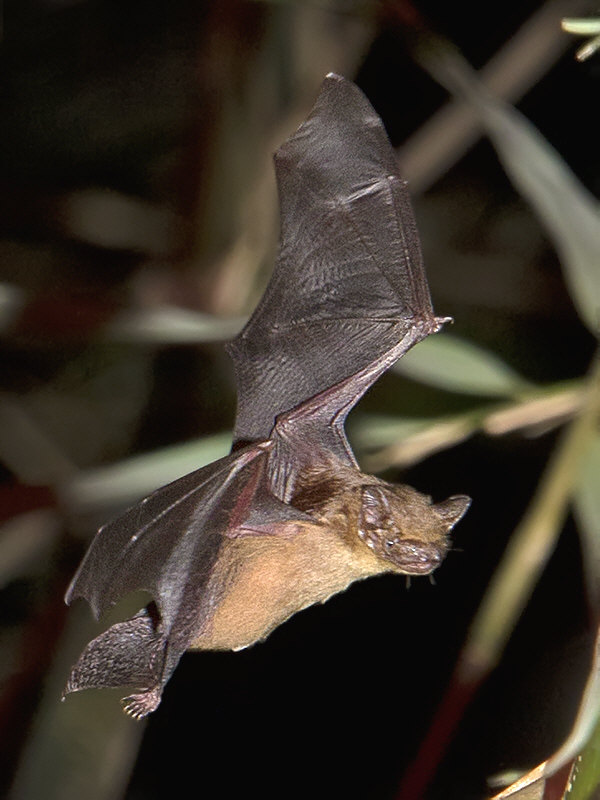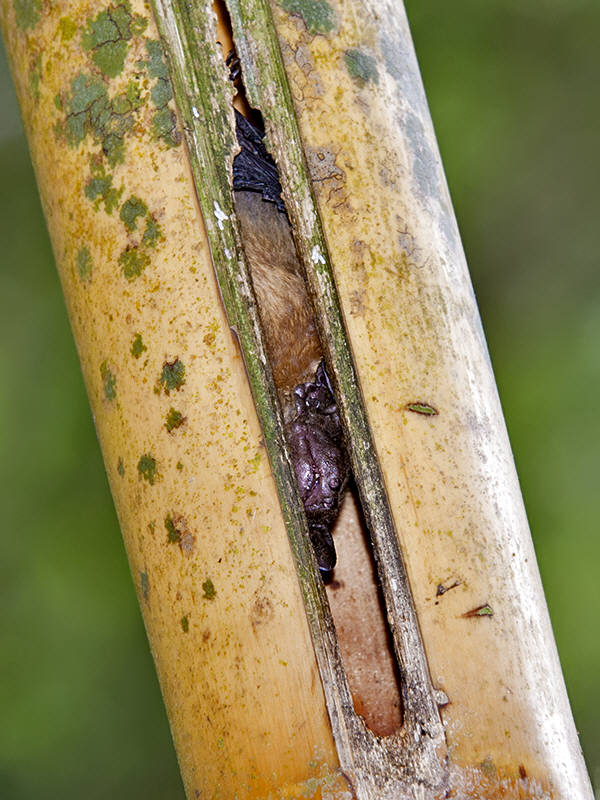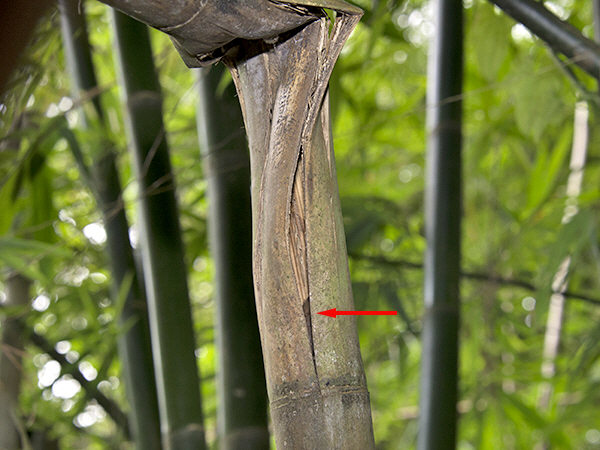
Fig 1

Fig 2

Fig 3

Fig 4

Fig 5

Fig 6

Fig 7
|
Order : CHIROPTERA
Family : Vespertilionidae
Species : Tylonycteris spp.
Forearm Length : up to 3.2 cm
Weight : up to 10 grams
Bamboo Bats (or
'Club-footed Bats') are so-called because they mainly roost inside the stems
(or 'culms') of various bamboo species, however they may also roost
in rock crevices and
narrow treeholes.
They occur in parts of
India, southern China, Myanmar, Thailand, Laos, Cambodia, Vietnam,
Peninsular Malaysia, Singapore, western Indonesia (including Sumatra,
Java, Borneo, Sulawesi) and the Philippines.
Their fur colour is variable both within and between species, comprising various
shades of brown, greyish-brown or orange-brown.
Bamboo Bats have a
remarkably flattened skull, which allows them to squeeze through narrow
slits of around 4-8 mm to gain access to their roosting chamber
(Medway & Marshall, 1970).
The thumbs and
soles of the feet have fleshy pads which give a firm grip inside smooth bamboo.
Entrances to roosting chambers inside bamboo can be formed in a few ways; they
naturally occur in dead stems, and may also be formed when a stem has been
bent over and damaged. The action of various burrowing and boring insects can also
create narrow slits.
In a famous study in Peninsular Malaysia, undertaken in the
1960's, the action of a Lasiochila beetle in the
large bamboo Gigantochloa scortechinii was found to have created
innumerable narrow, vertical slits of suitable dimensions for local bamboo bats (Medway & Marshall, 1970).
Roosting sites are largely inaccessible to predators, although an
instance of predation by a
Paradise Tree Snake was documented in
Singapore (Leong & Chan, 2011).
In China, bamboo bats are known to feed mainly on insects from the orders
Hymenoptera and Diptera.
Prior to 2017 just 3 species of bamboo bat were recognised, but after a detailed
genetic study (Tu et al, 2017) 6 species are now widely recognised.
The Southeast Asia mainland is dominated by two widespread species the
Malayan Bamboo (Tylonycteris malayana,
formerly part of T. robustula) and Blyth's Bamboo Bat (Tylonycteris
fulvida, formerly part of T. pachypus).
T. pachypus
(Lesser Bamboo Bat) and T. robustula (Greater Bamboo Bat) occur on
Borneo, Sumatra and other islands.
The Tonkin Bamboo Bat (T. tonkinensis) and the smallest species of
all, the Pygmy
Bamboo Bat (T. pygmaeus), occur in northern Vietnam and southern
China.
Figs 1 to 3 : Bamboo Bats returns to their roost in a clump of bamboo at the
edge of secondary forest
Figs 4 and 5 :
Bamboo bats roosting inside the stem of the bamboo
Schizostachyum brachycladum. In these examples the fur is medium brown.
Fig 6 : This bamboo stem was twisted and broken by a fallen tree, thereby
creating a roosting chamber for a bamboo bat (arrowed).
Fig 7 : A fast-flying bamboo bat skirts a tangled clump of bamboo at dusk.
All photos from Singapore; we suspect all to be of Tylonycteris malayana,
based on the posterior base of the ears, which is thickened, and on
sonograms recorded around each roost.
References : M1, M2, M3, M6
Leong Tzi Ming & Chan Kwok Wai. (2011). Bats in
Singapore – ecological roles and conservation needs. In Proceedings of
Nature Society, Singapore’s Conference on ‘Nature Conservation for a
Sustainable Singapore’. Vertebrate Study Group, Nature Society Singapore.
Medway, L. & Marshall, A. G. (1970). Roost-site selection among flat-headed
bats (Tylonycteris spp.). Journal of Zoology, 161(2), 237-245.
Tu, V. T., Csorba, G., Ruedi, M., Furey, N. M.,
Son, N. T., Thong, V. D., Bonillo, C. & Hassanin, A. (2017). Comparative
phylogeography of bamboo bats of the genus Tylonycteris (Chiroptera,
Vespertilionidae) in Southeast Asia. European Journal of Taxonomy,
274: 1-38. |